-
*Astrella.
User deleted
The Mystery of Oak Island Treasure
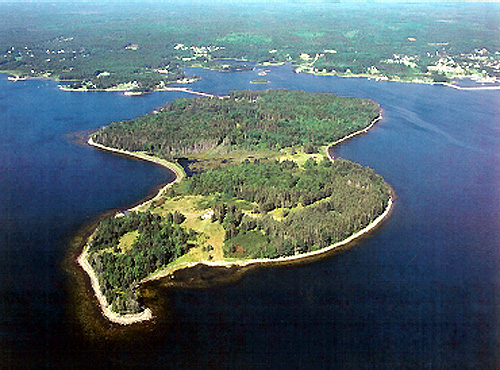
Oak Island is a 57-hectare (140-acre) island in Lunenburg County on the south shore of Nova Scotia, Canada. The tree-covered island is one of about 360 small islands in Mahone Bay and rises to a maximum of 11 meters (36 feet) above sea level. Located 200 metres from shore and connected to the mainland by a modern causeway, the island is privately owned.
Oak Island is noted as the location of the so-called Money Pit and the site of over 200 years of treasure hunting. Repeated excavations have reported layers of apparently man-made artifacts as deep as 31 metres (102 ft), but ended in collapsed excavations and flooding. Critics argue that there is no treasure and that the pit is a natural phenomenon, likely a sinkhole.
The history of the island and the ongoing search for treasure are the subject of the reality television program The Curse of Oak Island, which premiered on the History Channel on January 5, 2014.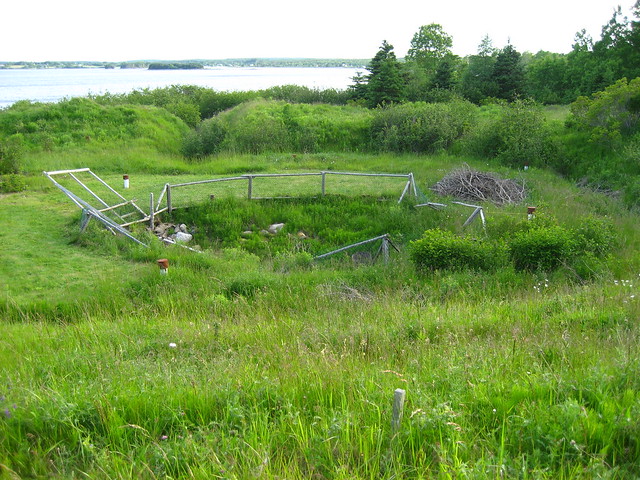
History of the Money Pit
Early accounts
There are many 19th-century accounts of Oak Island, but some are conflicting or biased. Further, physical evidence from the initial excavations is absent or has been lost. A basic summary of the history of the pit is as follows:
In 1795, 18-year-old Daniel McGinnis, after observing lights coming from the island, discovered a circular depression in a clearing on the southeastern end of the island. Adjacent to the clearing was a tree with a tackle block on one of its overhanging branches. McGinnis, with the help of friends John Smith (in early accounts, Samuel Ball) and Anthony Vaughan, excavated the depression and discovered a layer of flagstones a few feet below. On the pit walls there were visible markings from a pick. As they dug down they discovered layers of logs at about every 10 feet (3.0 m). They abandoned the excavation at 30 feet (9.1 m).
This initial discovery and excavation was first briefly mentioned in print in the Liverpool Transcript in October 1856. A more complete account followed, again in the Liverpool Transcript by a Justice of the Peace in Chester, Nova Scotia, the Novascotian, British Colonist, and A History Of Lunenburg County (the last source based on the Liverpool Transcript articles).
About eight years after the 1795 dig, according to the original articles and the memories of Vaughan, another company examined what was to become known as the "Money Pit." The Onslow Company sailed 300 nautical miles (560 km) from central Nova Scotia near Truro to Oak Island with the goal of recovering what they believed to be secret treasure. They continued the excavation down to approximately 90 feet (27 m) and found layers of logs or "marks" about every ten feet (3 m) and layers of charcoal, putty and coconut fibre[10] at 40, 50 and 60 feet (12, 15 and 18 m).
According to one of the earliest written accounts, at 80–90 feet (24–27 m), they recovered a large stone bearing an inscription of symbols. Several researchers apparently attempted to decipher the symbols. One translated them as saying: "forty feet below, two million pounds lie buried." The symbols currently associated with the "forty feet down..." translation and seen in many books first appeared in True Tales of Buried Treasure, written by explorer and historian Edward Rowe Snow in 1951. In this book he states he was given this set of symbols by Reverend A.T. Kempton of Cambridge, Massachusetts. Nothing more is known about Kempton's involvement in the Oak Island tale. The pit subsequently flooded up to the 33-foot (10 m) level. Bailing did not reduce the water level, and the excavation was abandoned.
Investors formed The Truro Company in 1849, which re-excavated the shaft back down to the 86 feet (26 m) level, where it flooded again. They then drilled into the ground below the bottom of the shaft. According to the nineteenth-century account, the drill or "pod auger" passed through a spruce platform at 98 feet (30 m), a 12-inch (300 mm) head space, 22 inches (560 mm) of what was described as "metal in pieces", 8 inches (200 mm) of oak, another 22 inches (560 mm) of metal, 4 inches (100 mm) of oak, another spruce layer, and finally into clay for 7 feet (2.1 m) without striking anything else.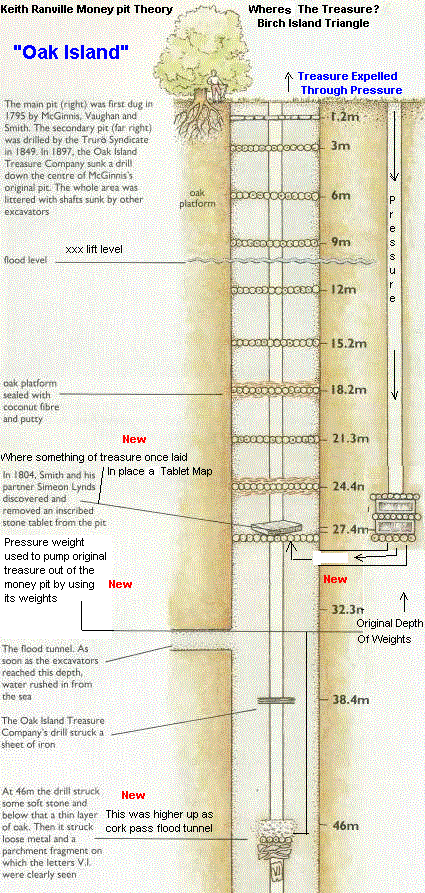
Oak Island Association and Old Gold Salvage group
The next excavation attempt was made in 1861 by a new company called the Oak Island Association which resulted in the collapse of the bottom of the shaft into either a natural cavern or booby trap underneath. It was later theorized that the imagined chests had fallen into a deep void and that the pit may have been booby-trapped to protect the treasure. The first fatality during excavations occurred when the boiler of a pumping engine burst. (Six people have been killed in accidents during various excavations.) The company gave up when their funds were exhausted in 1864.
Further excavations were made in 1866, 1893, 1909, 1931, 1935, 1936, and 1959, none of which was successful. Excavators did however pour red paint into the flooded pit which revealed three separate exit holes around the island. Another fatality occurred on 26 March 1897, when Maynard Kaiser, a worker, fell to his death. Franklin Roosevelt was part of the Old Gold Salvage group of 1909 and kept up with news and developments for most of his life.
Gilbert Hedden and William Chappell
In 1928, a New York newspaper printed a feature story about the strange history of the island. Gilbert Hedden, operator of a steel fabricating concern, saw the article and was fascinated by the engineering problems involved in recovering the putative treasure. Hedden collected books and articles on the island and made six trips there. He even ventured to England to converse with Harold Tom Wilkins, the author of Captain Kidd and His Skeleton Island, believing he had found a link between Oak Island and a map in Wilkins's book.
Hedden purchased the southeast end of the island. He began digging in the summer of 1935, following excavations by William Chappell in 1931. In 1939, he even informed King George VI about developments on Oak Island.
The 1931 excavations by William Chappell sank a 163-foot (50 m) shaft 12 × 14 feet to the southwest of what he believed was the site of the 1897 shaft, close to the original pit. At 127 feet (39 m), a number of artifacts, including an axe, an anchor fluke, and a pick were found. The pick has been identified as a Cornish miner's poll pick. By this time, the entire area around the Money Pit was littered with the debris and refuse of numerous prior excavation attempts, so the owner of the pick cannot be identified.
Restall family and Robert Dunfield
Excavation by the Restall family in the early 1960s ended tragically when four men died after being overcome by fumes in a shaft near the beach. In 1965, Robert Dunfield leased the island and, using a 70-ton digging crane with a clam bucket, dug out the pit area to a depth of 134 feet (41 m) and width of 100 feet (30 m). The removed soil was carefully inspected for artifacts. Transportation of the crane to the island required the construction of a causeway (which still exists) from the western end of the island to Crandall's Point on the mainland two hundred metres away.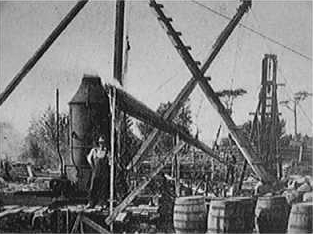 Money Pit at Oak Island
Money Pit at Oak Island
Triton Alliance
Around 1967, Daniel C. Blankenship and David Tobias formed Triton Alliance, Ltd. and purchased most of the island. In 1971, Triton workers excavated a 235-foot shaft supported by a steel caisson to bedrock. According to Blankenship and Tobias, cameras lowered down the shaft into a cave below recorded the possible presence of some chests, human remains, wooden cribbing and tools; however, the images were unclear, and none of these claims has been independently confirmed. The shaft subsequently collapsed, and the excavation was again abandoned. This shaft was later successfully re-dug to 181 feet (55 m), reaching bedrock; work was halted because of lack of funds and the collapse of the partnership.
In the January 1965 issue, an account of an excavation of the "Money Pit" appeared in Reader's Digest magazine.Over a decade later, the Money Pit mystery was the subject of an episode of the television series In Search of..., which first aired 18 January 1979, bringing the legend of Oak Island to a wider audience.
During the 1990s, further exploration was stalled because of legal battles between the Triton partners. As of 2005, a portion of the island was for sale for an estimated US$7 million. A group called the Oak Island Tourism Society had hoped the Government of Canada would purchase the island, but a group of American businessmen in the drilling industry did so instead.
Oak Island Tours Inc.
It was announced in April 2006 that brothers Rick and Marty Lagina from Michigan had purchased a 50% stake in Oak Island Tours Inc., for an undisclosed amount of money. The shares sold to the Michigan partners were previously owned by David Tobias; remaining shares are owned by Blankenship. Center Road Developments, in conjunction with Allan Kostrzewa and Brian Urbach, members of the Michigan group, had purchased Lot 25 from David Tobias for a reported $230,000 one year previous to Tobias selling the rest of his share. The Michigan group, working with Blankenship, has said it will resume operations on Oak Island in the hope of discovering buried treasure and the mystery of Oak Island.
In July 2010, Blankenship and the other stakeholders in Oak Island Tours Inc. announced on their website that the Nova Scotia Department of Natural Resources/Tourism, Culture and Heritage had granted them a temporary Treasure Trove License, allowing them to resume activities until 31 December 2010. After December 2010, the department repealed the former Treasure Trove Act and replaced it with a new "Oak Island Act". The new Oak Island Treasure Act came into effect as of 1 January 2011 and allows for treasure hunting to continue on the island under the terms of a licence issued by the Minister of Natural Resources.Treasure theories
There has been wide-ranging speculation among enthusiasts as to who originally dug the pit and what it might contain. Later accounts say that oak platforms were discovered every 10 feet (3.0 m), but the earliest accounts simply say that "marks" of some type were found at these places. They also say there were "tool marks" or pick scrapes on the walls of the money pit and that the dirt was noticeably loose and not as hard packed as the surrounding soil. One expedition said they found the flood tunnel at 90 feet, and that it was lined with flat stones. However, Robert Dunfield (a trained geologist) wrote that he carefully examined the walls of the re-excavated pit and was unable to locate any evidence of this tunnel.
The cipher stone, which one researcher is said to have translated to read "Forty feet below two million pounds is buried", was allegedly last seen in the early 20th century (exact dates are a topic of controversy). Some accounts state that Smith used it as a fireback in his fireplace,[18] while others claim it was last seen as a doorstep in a Halifax bookbinder's shop. The accuracy of the translation, whether the symbols as commonly depicted are accurate, or if they meant anything at all, remains disputed. Barry Fell, the author of the controversial books America B.C. and Saga America, was sent a copy of the inscription by the chief archivist of the Nova Scotia Archives in the late 1970s. According to Mark Finnan Fell, whose publications consisted largely of alleged translations of inscriptions on stones found elsewhere in North America, concluded that the symbols were similar to the Coptic alphabet and when translated implied that the people needed to remember their God or else they would perish.
Man-made structures under Oak Island do in fact exist as discussed in many books, including a book written by Lee Lamb, daughter of Robert Restall. Whether these structures were constructed by people hiding a treasure, or are the remains of prior excavation attempts, is unknown.
Pirate treasure
One theory is that the pit holds a pirate treasure hoard buried by Captain Kidd or possibly Edward Teach (Blackbeard), who claimed he buried his treasure "where none but Satan and myself can find it." Some also hold to the theory that Kidd conspired with Henry Every and Oak Island was used as a pseudo community bank between the two.
Naval treasure
Another theory proposes it was dug to hold treasure but that this was done by someone other than pirates, such as Spanish sailors from a wrecked galleon or British troops during the American Revolution. John Godwin argued that, given the apparent size and complexity of the pit, it was likely dug by French army engineers hoping to hide the contents of the treasury of the Fortress of Louisbourg after it fell to the British during the Seven Years' War.
Marie Antoinette's jewels
There is a story that, like most others regarding the island, lacks adequate archival sources, or any quoted sources at all, places the priceless jewels of Marie Antoinette (which are historically missing, save for some specimens in the collections of museums worldwide) on Oak Island. During the French Revolution, when the Palace of Versailles was stormed by revolutionaries in 1789, Marie Antoinette instructed her maid or a lady-in-waiting to take her prized possessions and flee. Supposedly, this maid fled to London with such royal items as Antoinette's jewels and perhaps other treasures, such as important artwork or documents, secreted away either on her person (one variation suggests sewn into her underskirts in the case of the jewels, though fails to mention artwork) or as her luggage; it is even said she was perhaps assisted by the remaining officers of the French navy during the uprising at the queen's behest.
The story then goes on to say that this woman fled further afield from London to Nova Scotia. Through the royal connections she would have had during her service to the queen at Versailles, she managed to contract the French navy to help construct the famed 'pit' on the island. This theory (as noted) lacks recognized documentation other than that which is folkloric in nature, involves the French navy, which (during the Revolution) had an uncertain level of authority, and would place the construction of the Oak Island structure very close to its initial discovery by Daniel McGinnis in 1795. Whether such a complex engineering effort could have been completed in that small space of time is questionable, though no official date of its construction exists.
Shakespeare manuscripts
Still others have speculated that the Oak Island pit was dug to hold treasure much more exotic than gold or silver. In his 1953 book, The Oak Island Enigma: A History and Inquiry Into the Origin of the Money Pit, Penn Leary contended that the pit was used to hide manuscripts showing Francis Bacon to be the author of William Shakespeare's works. Leary's "The Second Cryptographic Shakespeare", published in 1990, identified ciphers in Shakespeare's plays and poems pointing to Bacon's authorship. Author and researcher Mark Finnan elaborated upon Leary's Oak Island theory. The theory was also used in the Norwegian book Organisten (The Organ Player) by Erlend Loe and Petter Amundsen.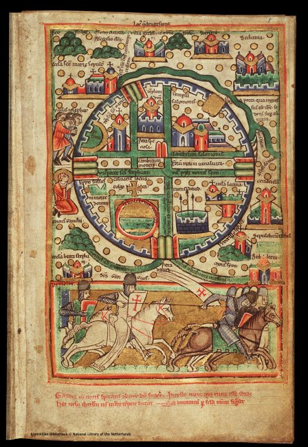
Knights Templar treasure
It has been asserted that the pit may have been dug by exiled Knights Templar and that it is the last resting place of the Holy Grail or even the holy Ark of the Covenant.
The Knights Templar have been linked to the mystery of Oak Island by many, primarily because historical records suggest that they had both motive and means to deposit treasure in the Money Pit. Compelling of all is their connection with the Holy Land, prompting speculation of untold wealth in the form of the Holy Grail.
The Knights Templar were a military and religious band of men. When they formed in 1114 AD they were a small band of nine men who protected the highways of the holy land, thus allowing pilgrims to travel safely without the worry of threat from pickpockets, thieves, pirates and massive Islamic armies.
The Knights Templar were themselves on a secret mission whilst they camped in the Temple of Solomon. Here they were swiftly excavating the ruins beneath the ancient stables and were quick to return home once they found what ever it was they had been searching for. Could the Templar have discovered the legendary Holy Grail?
Meanwhile, St. Bernard preached about Holy War, stirring up Europe for the Crusades, causing the Templar to find themselves at the centre of religious fervour. It was not long before sons of wealthy families were pledging their fortunes and property to the order just for the privilege of joining the band.
The Templar began to emerged as the worlds first bank whereby Kings would deposit their gold in Paris only to be able to withdraw it again in Jerusalem. The result of which was the immaculate growth of Templar, in both wealth and number.
When eventually Jerusalem and the Holy Lands were lost to Islamic rule, the Templar experienced a swift backlash whereby the king of France began to plot against the organisation in hope of reaching their immense wealth.
On 13th of October 1307 the King found an ally in the Pope and ordered that the Templar be arrested. Those captured played victim to the worst tortures the medieval culture could bestow upon them, followed by being burned at the stake. The Templar grand master announced a curse on the king and pope from his final position, the stake on which he was roasted. Within one year, both would be dead.
Once the day of the arrests arrived, the Paris Templar arranged that its treasures be loaded on a wagon train headed toward the port city of La Rochelle. From there, it was deposited aboard the Templar ships, setting sail to an unknown destination. According to Andrew Sinclair, author of "The Sword and the Grail", the Templar were said to flee with the treasure to Scotland.
It was in Scotland that they founded the St. Clair family, later to be known as Sinclair. The Sinclair's built Rosslyn Chapel, an often cited link between the Temple and Freemasonry. This chapel becomes temporarily the resting place of the legendary Holy Grail before its final journey to Nova Scotia, (a site currently enjoying increased fame due to the success of the popular Dan Brown novel, The Da Vinci Code).
The Sinclair's became the Grand Masters of the order and desired a new land in which to establish their utopian Templar government. Using both their money and military strength coupled with the sailing abilities of the Zeno's, they sailed westwards towards Nova Scotia.
The arrival of the Knights Templar in this region is supported by a Zeno narrative and map attributed to Vopell and Vavassatore. It depicts the landmass of Nova Scotia or New Scotland with the figure of a crowned knight. Further evidence exists of visitors in New England, in the form of the Tower in Newport, Rhode Island and, the Westford Knight, a carving of the figure of an armoured, European knight holding a cruciform sword, a common Templar emblem on graves.
With the motive to settle in Nova Scotia, one question remains, what happened to all the Templar treasure? Assuming treasure was still remaining after the building and sustaining St. Clair's and the voyage to America it would have been necessary to hide it.
Once the unsuccessful colony of the Temple died out, instead of sailing back east, the American Templar decided to hide the bounty. They built a complex 'Money Pit' on Oak Island by engineering flood traps to prevent anyone reaching the treasure. The spot is marked using the form of a stone cross, symbolism typical of the Templar.
Evidence exists to support the Templar's involvement in the Oak Island Money Pit, but to expand this theory further, it would be useful to consider the influence of the Freemasons in this area, as the Templar were a precurser for this select group of individuals. There remains a strong connection to this area with the Knights Templar, whether relative to the treasure or not and further study may shed light on the mystery. Rosslyn Chapel
Rosslyn Chapel
Freemasonry
Mark Finnan in his book Oak Island Secrets noted that many Masonic markings were found on Oak Island and pointed out that the shaft or pit and its mysterious contents seemed to replicate aspects of a Masonic initiation rite involving a hidden vault containing a sacred treasure. Joe Nickell identifies parallels between the accounts of Oak Island and the allegory of the "Secret Vault" in York Rite Freemasonry, similar to the Chase Vault, identifies many prominent excavators as Freemasons, and suggests that the accounts explicitly include Masonic imagery. The most thorough and comprehensive treatment to date of the masonic aspects of the Oak Island Legend is given by Freemason Dennis King in his article "The Oak Island Legend: The Masonic Angle"
Natural sinkhole theory
Critics argue that there is no treasure and that the apparent pit is a natural phenomenon, likely a sinkhole and natural caverns. Suggestions that the pit is a natural phenomenon, specifically a sinkhole or debris in a fault, date to at least 1911. There are numerous sinkholes on the mainland near the island, together with underground caves (to which the apparent booby traps are attributed).
The appearance of a man-made pit has been suggested to be partly due to the texture of sinkholes: "this filling would be softer than the surrounding ground, and give the impression that it had been dug up before", and the appearance of "platforms" of rotten logs has been attributed to trees or "blowdowns" falling or washing into the depression. An undetermined pit similar to the description of the early Money Pit had been discovered in the area. In 1949, workmen digging a well on the shore of Mahone Bay, at a point where the earth was soft, found a pit of the following description: "At about two feet down a layer of fieldstone was struck. Then logs of spruce and oak were unearthed at irregular intervals, and some of the wood was charred. The immediate suspicion was that another Money Pit had been found."
Viking Ship Theory
Another theory is that the money pit is actually a sunken Viking ship which has settled in a vertical position, making it a treasure only in the historical or archeological sense. Sukhwant Singh theorizes the regularly separated platforms are actually wooden backrests for rowers, and the coconut fibers are the remains of mattresses, pillows, or other cushions used by the Vikings for comfort.Pit flooding issues
In 1851, treasure hunters discovered fibres beneath the surface of one beach called Smith's Cove. This led to the theory that the beach had been converted into a giant siphon, feeding water from the ocean into the pit via a manmade tunnel.
A sample of this material is said to have been sent to the Smithsonian Institution in the early 20th century, where it was concluded that the material was coconut fibre. The origin of these fibres has been a source of heated debate among Oak Island researchers, since coconut trees do not occur naturally in Canada. Oak Island lies on a glacial tumulus system and is underlaid by a series of water-filled anhydrite cavities, which may be responsible for the repeated flooding of the pit. This type of limestone easily dissolves when exposed to water, forming caves and natural voids. Bedrock lies at a depth of 38–45 meters in the Money Pit area.
Upon the invitation of Boston-area businessman David Mugar, a two-week survey was conducted by the Woods Hole Oceanographic Institution in 1995. This is the only known scientific study that has been conducted on the site. After running dye tests in the bore hole, they concluded that the flooding was caused by a natural interaction between the island's freshwater lens and tidal pressures in the underlying geology, refuting the idea of artificially constructed flood tunnels. The Woods Hole scientists who viewed the videos taken in 1971 reported that nothing conclusive could be determined from the murky images. The five finger drains or box drains at Smith's Cove on Oak Island, which have traditionally been assumed to feed seawater into the alleged flood tunnel, have in recent times been argued to be the remains of an early salt works, and accordingly there is no connection between the five finger drains and any flooding of the Pit.
Source: http://en.wikipedia.org/wiki/Oak_Island
www.oakislandtreasure.co.uk/content/view/52/73/.
The Mystery of Oak Island Treasure |


